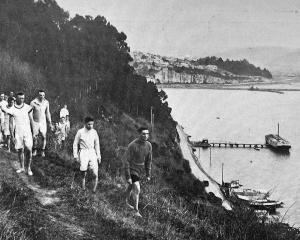He said that the whole Gallipoli campaign had been a series of blunders commencing with underestimating the fighting powers of the Turks and sending a naval contingent to make an attack alone, which warned the Turks of what was coming and gave them ample time to dig in.
Another serious blunder, he said, was the landing of troops at Anzac and Suvla Bay instead of massing a big army at the neck of the peninsula, which would have cut the Turks off from all their supplies and rendered them powerless.
‘‘Thousands of men were lost by bullets, aeroplane bombs, fever, dysentery, and all kinds of diseases,'' Mr Bartlett continued, ‘‘along the Gallipoli peninsula, where the conditions were dreadful. For all this sacrifice the Allies never reached their objective points. Six fresh divisions were hastily sent out from England last summer to replace the troops that had been killed or disabled, and a final drive was made on August 6, which was a failure owing to the surrounding conditions. Modern warfare is a question of strategic defence. That is to get well behind three lines of trenches fronted by barbed-wire entanglements, and let the enemy attack you. The Turks had that position against the Allies, and held it.''
■Taumarunui reports yesterday (says a Press Association telegram from Auckland) stated that, on Wednesday night, Ngaruahoe emitted flames 1500ft high.
The mountain was normal yesterday. Mount Tongariro is situated to the southward of Lake Taupo.
It consists of a group of distinct volcanic cones, the lava streams from which have so overlapped in their descent as to form one compact mountain mass at the base.
The highest of these cones is called Ngaruahoe, and attains an elevation of 7515ft.
The craters of Ngaruahoe, the Red Crater (6140ft), and Te Mari (4990ft) are the three vents from which the latest discharges of lava have taken place, the most recent having occurred in 1868.
These craters are still active, steam and vapour issuing from them with considerable force and noise, the vapours, charged with pungent gases and acids, making it dangerous to approach too near the crater lips.- ODT, 11.2.1916.











